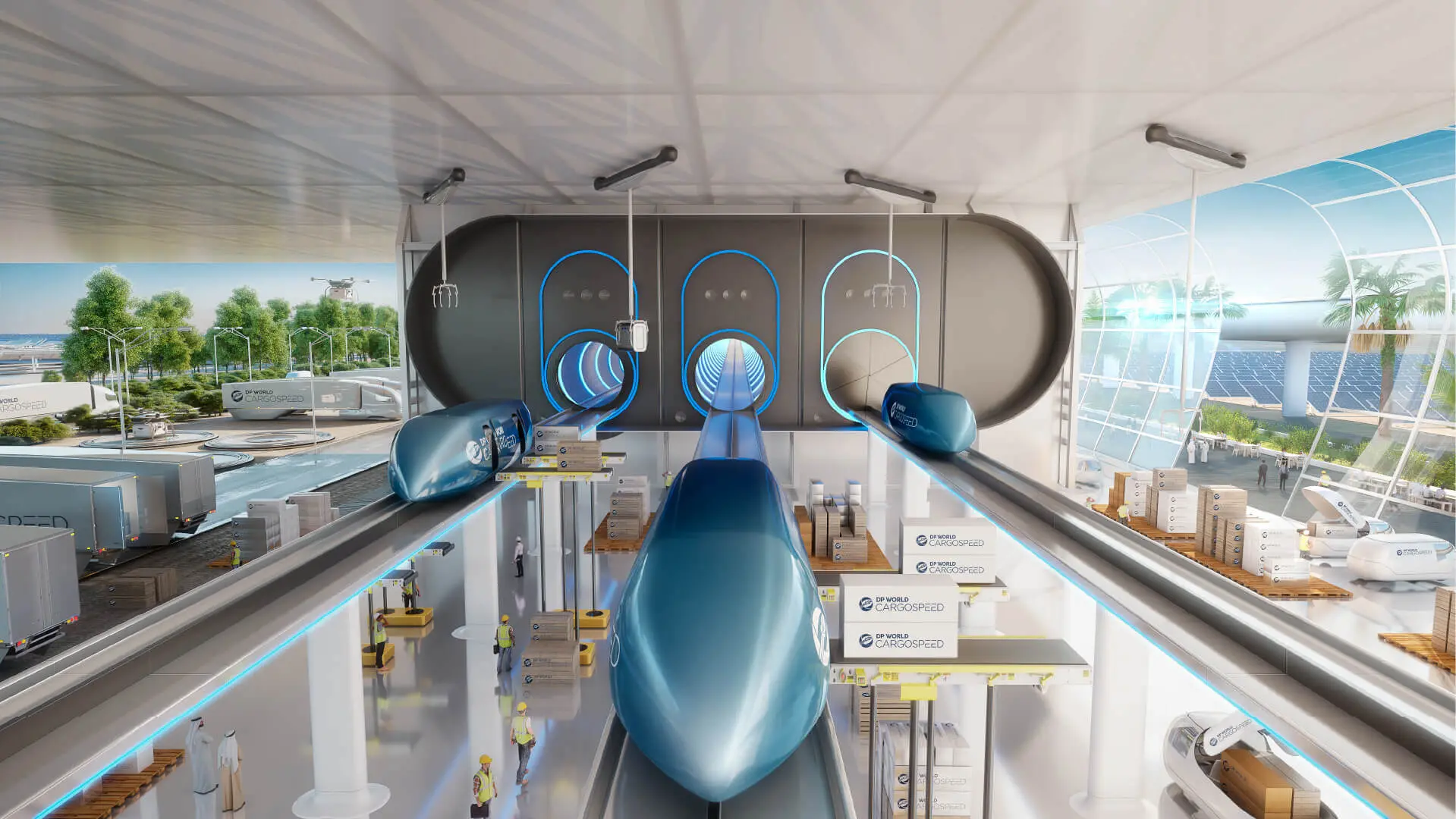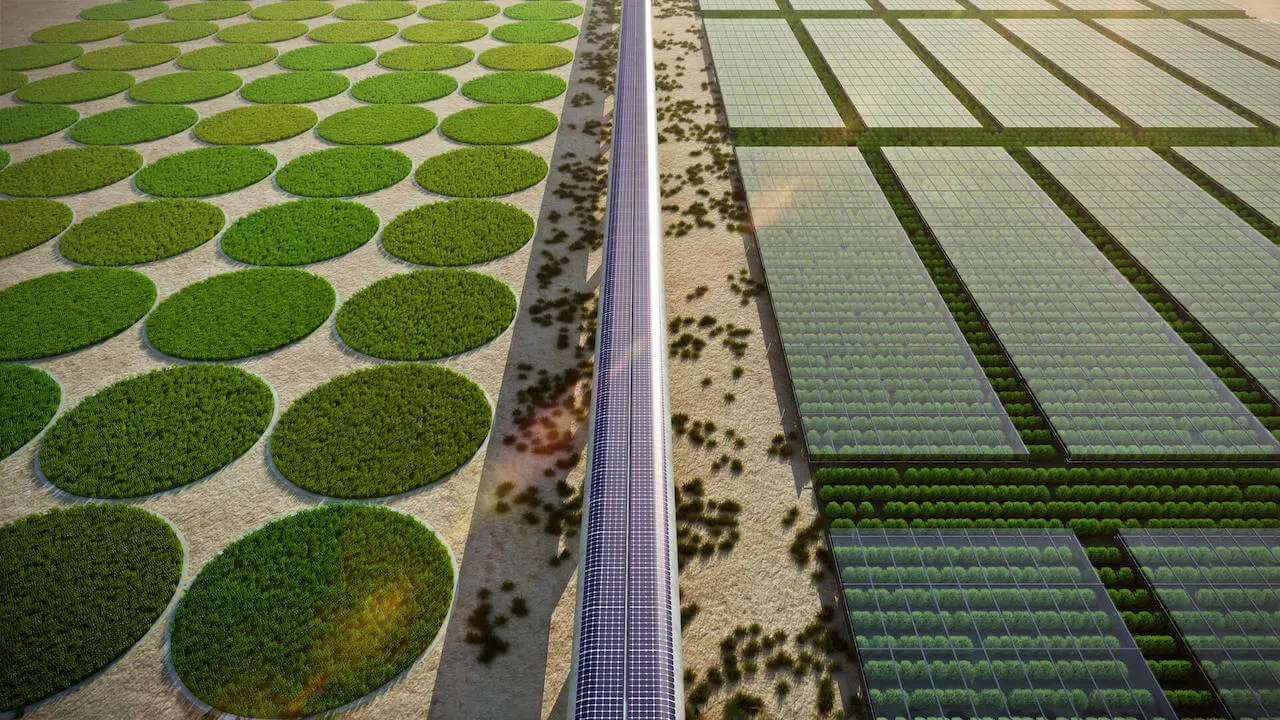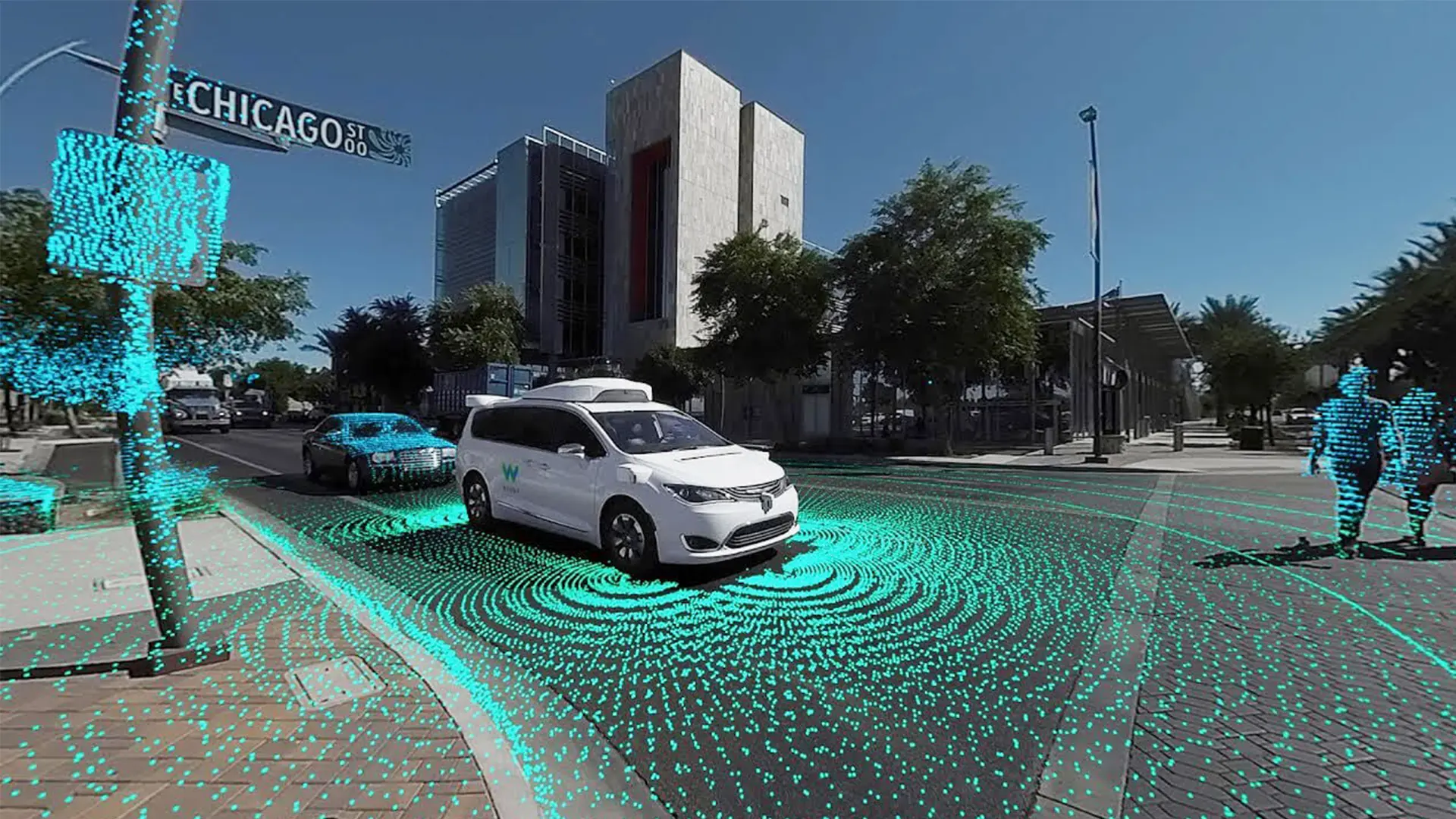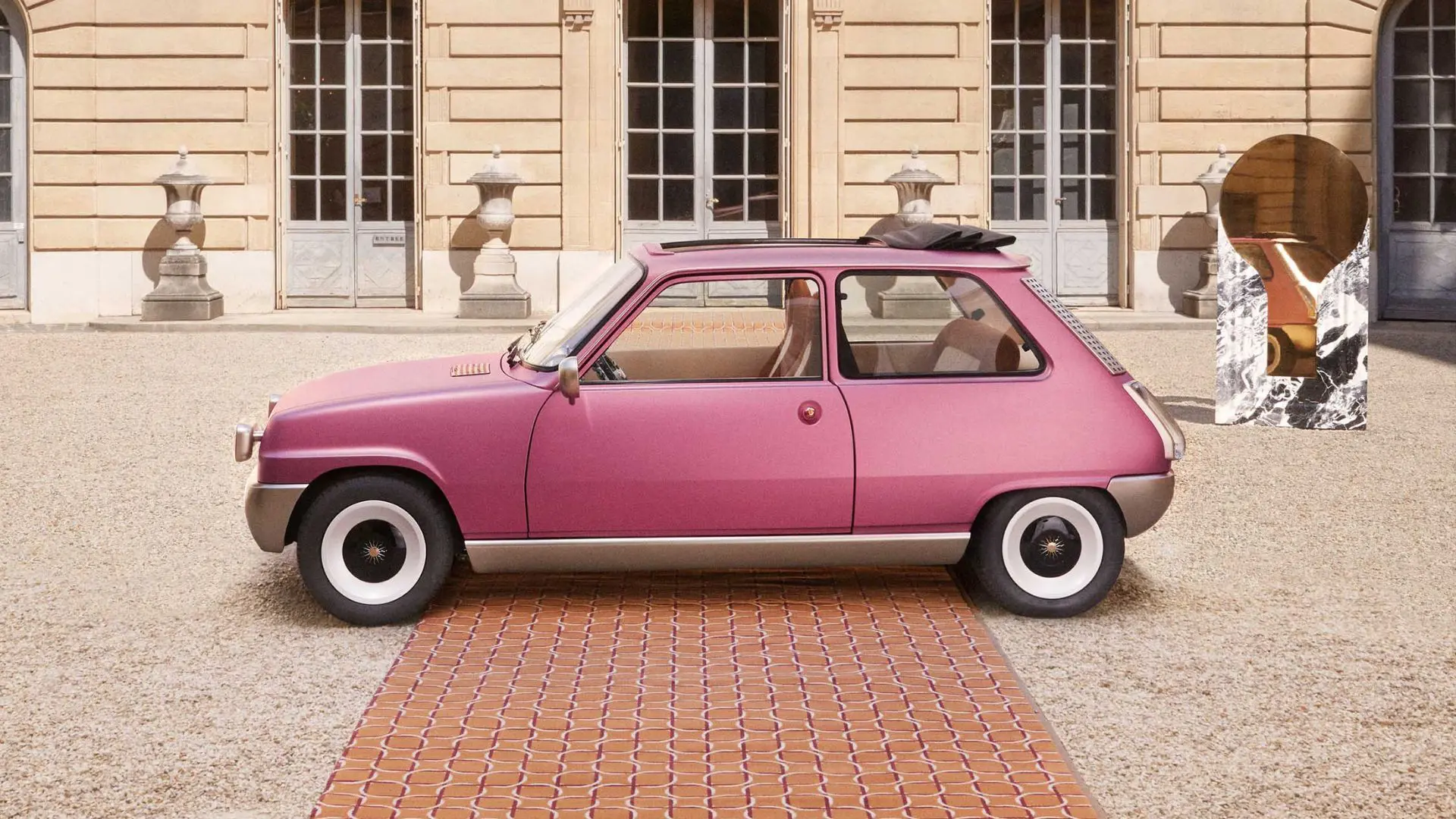Virgin Hyperloop: the archi-design factor traveling at 1,200 km/h in a tunnel
Virgin Hyperloop is radically transforming the transportation sector and triggering a paradigm shift in the way we move

For decades, we have dreamt about new forms of transportation, forms that seemed so unachievable we got used to only seeing them in science fiction films. Until companies like Virgin Hyperloop. Technological advancements and companies, such as Virgin Hyperloop, are radically transforming the transportation systems around which our modern world has been build and are not only bringing the modes of transport we dreamt about to life, but bringing the awaited age of futuristic transportation to a beginning.
Traveling from one city to another in minutes, with no hassle, no stress or delays, not even worrying about the weather, you just book your ticket on Hyperloop and head over to your nearest portal, this is the future that awaits us and the future Virgin Hyperloop is making a reality.

The transportation infrastructure company, founded by Shervin Pishevar, Josh Giegel, and Brogan BamBrogan, has created a completely autonomous, zero-emission mass transit system that uses electric propulsion to accelerate passenger pods through a tube at faster-than-airline speeds. With projects in Mumbai, Dubai, and across the United States, including its test track in Las Vegas, the Virgin Hyperloop system is the first new mode of public transport in over 100 years and it is expected to be fully operational by 2030.
DesignWanted interviewed Sara Luchian, Director of Passenger Experience and Min-Tak Cheung, Senior Design Architect to learn more about Virgin Hyperloop’s plans, the groundbreaking design and the overall experience for future passengers. And while there is still a little time until we hop on a pod of our own one thing is certain, the new dawn of transportation has arrived.
Who are Sara Luchian and Min-Tak Cheung, how did you begin your career?
Sara Luchian:
“I’m a first-generation American, raised in Boston by Romanian engineers. I was gifted in math and my parents probably hoped that I too would become an engineer – or an astronaut! – but my deepest interest always lay in people.
What motivates and moves us, how to influence and inspire, the strength and fragility of our connections with one another. I started volunteering on a crisis hotline in my teens and graduated with honors in psychology from Harvard.
I spent the next few years working in social impact investing and economic development, trying to carve a career path that was challenging, engaging, and would enable me to make a positive difference in the world. Ultimately, I decided that non-profits were not the right avenue for me and that I would be best served by learning to speak the “language” of business.
In 2012, I graduated with an MBA from the Wharton School at the University of Pennsylvania, and spent a few years consulting before being swept up by the promise of Hyperloop.”

Min-Tak Cheung:
“I was born in a small village in China and immigrated Hong Kong when I was 10. It was the first time I saw a high-rise building, and the first time I took a train. The cultural change had a major impact on my subconscious mind and drove me to pursue architecture when I grew up.
I got my bachelor’s degree in architecture from the Chinese University of Hong Kong and received my master’s degree in architecture from Washington University in Saint Louis. I graduated in December 2008 and the whole economy collapsed.
With half of the architects in the United States being unemployed or underemployed at that time, I was very lucky to get an offer from an architectural firm based in Los Angeles which just got awarded a contract for a Metro subway project – The Regional Connector Transit Corridor Project. I was hired for that project as the job captain for one of the underground stations, and that’s how I stepped into transit architecture right after school by fate.”
How did your journey with Virgin Hyperloop begin? What moved you to join this innovative transportation company based in LA?
Sara Luchian:
“During my years at the Boston Consulting Group, I was fortunate enough to work with brilliant colleagues to solve interesting challenges for some of the world’s biggest companies. Moving forward in my career, I wanted to continue to work with interesting people, but with a greater sense of purpose.
When I first heard about the hyperloop concept, I was intrigued by the incredible impact it could have – not only on passenger travel, but on cargo, urban planning, and the ways we negotiate distance from things we want vs things we need. When I saw a job posting online for a role in the Business Strategy group at Virgin Hyperloop, I hardly dared to dream I could be a part of something so, well, cool.
That was over three years ago! In the interim, I recognized a gap in our approach to the hyperloop experience. With so many engineers (understandably) focused on developing and refining the technology itself, there had been little focus on the experience that technology would enable. You can design the most elegant mechanical solution, display sophisticated diagrams or calculate return on investment – but at the end of the day, we are talking to and moving human beings.
People want to know: what does it feel like? How does it make my life better? So last year I established the Passenger Experience function to better develop and communicate our story. It is a satisfying marriage of two through-lines of my career: an appreciation for empirical data combined with a sensitivity to how humans feel and behave.”
Min-Tak Cheung:
“2018 was a significant year for Virgin Hyperloop. It was the year that the company transformed from a technology startup to a transportation infrastructure company. It was the year that VH announced the intent of the Indian government to build the first commercial hyperloop project using our proprietary system to connect Pune and Mumbai. It was the year VH got a new chairman and a new CEO. It was also the year that VH decided to hire its first in-house architect.
Being a transit architect for almost a decade, to have the opportunity to be part of this mass transit revolution, to be at the forefront of transportation technologies, and to work side by side with the most talented engineers in the industry, is my ultimate dream.”

How does Virgin Hyperloop compare to traditional transportation services in regards to your work as Director of Passenger Experience and Senior Design Architect?
Sara Luchian:
“One of the greatest advantages we have in developing the hyperloop – the first new mode of transportation in over a century! – is that we are not hamstrung by legacy processes or technology. We can look at the experience of travel from fresh eyes and ask ‘What do I love? What do I hate? Is this still necessary? and then start from the ground up.
Of course, it’s important to remember that some people will be nervous about a new technology and so a certain sense of familiarity or comfort is important. But we don’t have to design tight-packed airline cabins, because we are not an airline. We don’t have to make interim stops along a route, because we are not a train. In this role, more than ever before, I must constantly question the status quo.
Then, in collaboration with key stakeholders like our engineers and investors, we must be able to rationalize our choices – whether we stick with something or deviate drastically from what people expect. It’s both intimidating and invigorating, an opportunity to reimagine the experience of travel!”

Min-Tak Cheung:
“In 2009, when I started my career as a transit architect, the Little Tokyo Arts District Station in Los Angeles, designed by my former boss, opened to the public. On that day, a woman fell onto the track and died in the station – on a day that was supposed to be celebrated. That shocked me as a junior architect.
From that point onward, I knew that what I design matters. I knew that safety would always be my top priority. At Virgin Hyperloop, I know I am building a safer future for passengers. Our system travels the same speed as a plane, but are building in multiple redundancies. Not only that, but we are actually inherently safer. The system is autonomous, thus eliminating the factor of human errors (which is the main cause of vehicular collisions) from the equation.
Unlike most other modes of transportation that are subject to severe weather conditions such as snowstorms and thunderstorms, our pods travel inside a tube that is completely insulated from the outside environment, making it the safest mode of public mass transit. Safety is the highest priority in our company and I work hard every day, knowing that my actions as a Senior Design Architect can save passengers’ lives.”
Being a mass transit system propelled by electromagnetic levitation through low-pressure vacuum tubes, how will the infrastructure of hyperloop be integrated within public spaces?
Min-Tak Cheung:
“In 2017, I was in Orlando, Florida for the AIA Conference. I booked a hotel that was only 1 mile away from the Convention Center, thinking that it would be a nice morning walk. Little did I know that there is a freeway running on the surface dividing the hotel and the Convention Center. I either had to walk for more than an hour to bypass the freeway, or take a rideshare.

Things like this will never happen with our hyperloop system. Our infrastructure is enclosed in a linear vacuum tube. It will be either elevated above grade or tunneled underground. In situations that it has to travel at grade, such as transitioning from above grade to underground, we will create a berm on top of the tube to fully achieve grade separation.
This approach not only reduces the cost of land acquisition (which is the main roadblock for most linear infrastructure projects), but also eliminates the interference with other modes of transportation such as automobiles, thus achieving a greater degree of safety.”
Virgin Hyperloop system scales to capacity in real-time, what will define the next generation of transportation hubs?
Min-Tak Cheung:
“Being VH’s in-house architect, my role is to define the architectural design criteria for our hyperloop portals (our terminology for a hyperloop station). The reason we call it a portal is because the word “station” by definition implies waiting. But for our system, it’s like Uber or Lyft – on-demand.
We want to eliminate the notion of waiting and wasted time as much as possible. Time is the most limited resource and it shouldn’t be wasted on the daily commute. My mission is to use architecture to save people’s time. To achieve that, we have to identify all the bottlenecks in our existing public transportation systems from the urban scale to the human scale, and then use innovative approaches to eliminate those bottlenecks. One example is our small vehicle size.
Unlike a train where you have to wait for hundreds of passengers to embark or disembark and make multiple stops along the way, our pod will send a small number of passengers directly to their destination. We’re able to achieve the same throughput – or even more – compared to other systems, but with a much more personalized experience.”

Where does the process of designing an experience for future passenger’s needs begin? What are the main challenges faced in the process?
Sara Luchian:
“From my perspective, the passenger experience itself begins at the moment that someone decides they want to travel. What are their options? Is hyperloop in the consideration set? How do they prioritize the pros and cons of each available mode?
Then I have to move through the entire journey from there, as if I am the passenger: how and when do I purchase a ticket? How do I get to a portal, and how do I find my way around once inside? What does the actual hyperloop ride feel like? What amenities are available to me?
And at each point, I have to think about less-common use cases, possible frustrations, that sort of thing. It is, essentially, an exercise in empathy – at a company that, by its very nature, embraces quantitative data and optimization algorithms. So perhaps that’s the first challenge.”

How is the Virgin Hyperloop system facilitating the overall mobility experience for the user? What are the types of interactions that will enhance commuters’ life?
Sara Luchian:
“The entire system has been designed with comfort, safety, and ease in mind. With the push of a button, travelers will be able to reserve a seat on a pod going directly to their destination with all the speed – and less of the hassle – of airplane flight. Because our vehicles are small, our entire system has greater flexibility: to offer express trips, to respond quickly to changes in demand, and to drastically reduce waiting times.
Part of my dialogue with Min-Tak and our design partners is around portal design and way-finding: the physical layout has a meaningful impact on people’s perceptions. It can affect anxiety, comfort, even perceived wait time. Then there are some of the necessary evils, so to speak, of travel – like security.

We are thinking about how to make this as unobtrusive and seamless as possible, while still signaling that security measures are in place. What if people and luggage could be scanned while strolling through a small indoor garden, or a short gallery featuring local artists?
I am inspired by my visits to Singapore’s Changi Airport, which has been consistently rated the best in the world and is practically a destination in its own right. We must ask: what opportunities are there to transform traditional friction points into experiences that are not just “less bad,” but actually potentially delightful? That creative ideation is ongoing; but in the meantime, we have a long history (relatively speaking) of integrating technology into the system that makes the trip smoother.”

Sara Luchian:
“Expect touchless ticketing and increased automation at every stage to reduce human error or delay. For the inside of the pod, I’ve worked with experts on how to create an experience that soothes, rather than assaults, the senses.
Seemingly small touches – like organic finishes, warm lighting, sonic cues, even the temperature and imperceptible fragrances in the air – can all have an effect on how someone feels. And it’s not just psychological!
There’s evidence that many of these same elements can have beneficial effects on a person’s physiology; by reducing heart rate, for example. I have lived in Los Angeles for over three years and, though I am one of the rare few without a car, the commute to work – to anywhere! – is a reliable source of stress.

Imagine if, rather a long and frustrating commute, we could look forward to a brief and even restorative ride… on a system that has the added benefit of exerting less stress on the environment as well. Of course, if these goals were easily attained, they’d already been widespread.
And, coming from a business background, I’m not naive enough to think that every aspiration we have will be realized. There are always practical constraints. But humanity has always striven for goals seemingly just out of reach – and that is, I think, how we make progress.
My job is to dream the big dream, translate it into actionable requirements, and then step back to let our team build a system that will hopefully transport us all into a brighter, broader future.”














